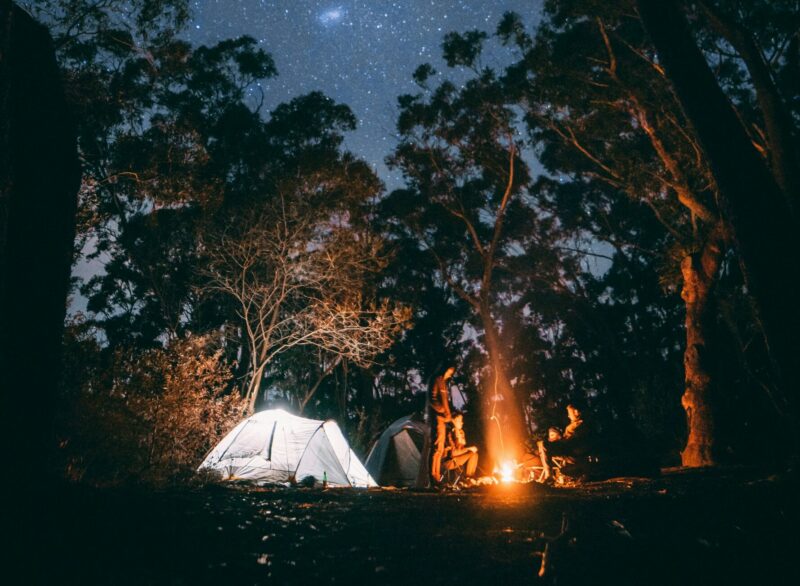
Fall in Minnesota is a magical time. The vibrant autumn colors, crisp air, and serene landscapes make it an ideal season for camping. Whether you’re an experienced outdoors enthusiast or planning your first camping trip, proper preparation is essential to ensure a safe and enjoyable experience. In this guide, we’ll cover everything you need to know for a fall camping adventure in Minnesota while practicing stewardship and caring for our natural places.
1. Choose the Best Fall Camping Locations
When planning your fall camping trip in Minnesota, selecting the right location is crucial. The state is home to numerous state parks, forests, and wilderness areas, each offering unique camping experiences. Popular spots include Itasca State Park, Boundary Waters Canoe Area Wilderness, and Gooseberry Falls State Park. These locations provide a variety of terrains, from dense forests to lakeside views, perfect for soaking in the beauty of Minnesota’s fall season.
2. What to Pack for Fall Camping in Minnesota
Minnesota’s fall weather can be unpredictable. It’s important to check the forecast before your trip and pack accordingly. Daytime temperatures can be mild, but nights can get chilly, especially in northern Minnesota. Layering is key—bring moisture-wicking base layers, insulating mid-layers, and a waterproof outer layer. Don’t forget a warm sleeping bag rated for cooler temperatures, and pack a good-quality tent that can withstand wind and rain.
3. Practice Leave No Trace
As stewards of Minnesota, it’s important to minimize your impact on our shared natural places. Leave No Trace principles are essential for preserving the beauty of our state’s parks and wilderness areas. This includes packing out all trash, staying on designated trails, and avoiding disturbing wildlife. If you plan to build a campfire, use existing fire rings and ensure the fire is completely extinguished before leaving the site.
4. Prepare for Shorter Days
As fall progresses, daylight hours in Minnesota become shorter. Plan your activities with this in mind to avoid being caught in the dark. Bring a reliable headlamp or flashlight with extra batteries, and set up your camp before sunset. It’s also wise to familiarize yourself with the area during daylight, so you’re better prepared if you need to navigate in low-light conditions.
5. Bring Proper Cooking Gear and Food
Cooking outdoors is one of the joys of camping. For a successful fall camping trip, bring a portable stove and enough fuel, as finding dry firewood can be difficult after autumn rains. Plan warm, hearty meals that are easy to prepare, such as soups, stews, and hot beverages. Pack enough food to last the duration of your trip, and store it in bear-proof containers if camping in areas with wildlife.
6. Be Mindful of Wildlife
Fall is an active time for wildlife in Minnesota, as animals prepare for winter. While it’s exciting to observe wildlife, it’s important to do so from a distance. Store your food securely and keep your campsite clean to avoid attracting animals. If you’re in bear country, take extra precautions by using bear-resistant containers and following local guidelines on food storage.
7. Care for our Natural Places while Camping in Minnesota
Minnesota’s landscapes are ever-changing in the fall, with leaves falling and temperatures dropping. Be mindful of the delicate environment by sticking to established campsites and trails. Avoid trampling vegetation, especially in fragile ecosystems. By respecting the natural environment, you contribute to the conservation and stewardship of Minnesota’s beautiful outdoor spaces.
8. Stay Informed About Local Regulations
Before heading out on your fall camping trip, familiarize yourself with local regulations and guidelines. Different parks and wilderness areas may have specific rules regarding camping, campfires, and wildlife interactions. Staying informed ensures a safe trip for you and minimizes your impact on our natural places.
9. Plan for Emergencies
Carry a first-aid kit, know the location of the nearest ranger station or emergency services, and ensure you have a reliable way to communicate in case of an emergency. Familiarize yourself with basic wilderness survival skills, such as navigation and fire-starting, in case you encounter unexpected situations.
10. Enjoy the Beauty of Minnesota’s Fall Season
Finally, take the time to fully enjoy the beauty of Minnesota’s fall season. Whether you’re hiking through vibrant forests, paddling on a serene lake, or simply relaxing by the campfire, let the natural world rejuvenate your spirit. Remember, camping in Minnesota during the fall is not just about adventure—it’s about appreciating and caring for the natural world around us.
Fall camping in Minnesota offers a unique and rewarding experience. By choosing the right location, packing appropriately, practicing Leave No Trace principles, and respecting our shared natural places, you can ensure a safe and enjoyable trip. As you explore Minnesota’s beautiful landscapes, remember the importance of stewardship and caring for our natural places. This fall, reconnect with nature and discover the wonders that Minnesota has to offer.